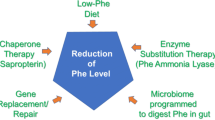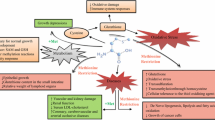Abstract
Summary: Two Korean sisters, one detected during neonatal screening, the otherascertained at age 3 years during family screening, have persistent hypermethioninaemia without elevation of plasma tyrosine or severe liver disease.Plasma total homocysteine (tHcy) is mildly elevated, but not so markedly as to establish a diagnosis of homocystinuria due to cystathionine β-synthase (CBS) deficiency. CBS deficiency was ruled out by the presence of slightly elevatedconcentrations of plasma cystathionine. Although the plasma concentrations of methionine were markedly elevated, plasma S-adenosylmethionine (AdoMet) was not. This pattern of metabolic abnormalities suggested that the patients have deficient activity of methionine adenosyltransferase (MAT) intheirlivers (MAT I/III deficiency). Molecular genetic studies demonstrate thateach patient is a compound heterozygote for two mutations in MAT1A, the gene that encodes the catalytic subunit that composes MAT I and MAT III: a previously known inactivating G378S point mutation, and a novel W387X truncating mutation. W387X mutant protein, expressed in E. coli and purified, has about 75% of wild-type activity. Negative subunit interaction between themutant subunits is suggested to explain the hypermethioninaemia of these sisters. They have had normal growth and development and have no mental retardation, neurological abnormalities, or other clinical problems. They are the first individuals of Korean descent proven to have MAT I/III deficiency.
Similar content being viewed by others
REFERENCES
Allen RH, Stabler SP, Lindenbaum J (1993) Serum betaine, N,N-dimethylglycine and N-methylglycine levels in patients with cobalamin and folate deficiency and related inborn errors of metabolism. Metabolism 42: 1448–1460.
Blom HJ, Boers GHJ, van den Elzen JPAM, Gahl WA, Tangerman A (1989) Transamination of methionine in humans. Clin Sci 76: 43–49.
Capdevila A, Wagner C (1998) Measurement of plasma S-adenosylmethionine and S-adenosylhomocysteine as their fluorescent isoindoles. Anal Biochem 264: 180–184.
Chace DH, Naylor EW (1999) Expansion of newborn screening programs using automated tandem mass spectrometry. Ment Retard Dev Disabil Res Rev 5: 150–154.
Chamberlin ME, Ubagai T, Mudd SH, Wilson WG, Leonard JV, Chou JY (1996) Demyelination of the brain is associated with methionine adenosyltransferase I/III deficiency. J Clin Invest 98: 1021–1027.
Chamberlin ME, Ubagai T, Mudd SH, Levy HL, Chou JY (1997) Dominant inheritance of isolated hypermethioninemia is associated with a mutation in the human methionine adenosyltransferase 1A gene. Am J Hum Genet 60: 540–546.
Chamberlin ME, Ubagai T, Mudd SH, et al (2000) Methionine adenosyltransferase I/III deficiency: novel mutations and clinical variations. Am J Hum Genet 66: 347–355.
del Pino MM, Corrales FJ, Mato JM (2000) Hysteretic behavior of methionine adenosyltransferase III. Methionine switches between two conformations of the enzyme with different specific activity. J Biol Chem 275: 23476–23482.
Guthrie R (1968) Screening for “inborn errors of metabolism” in the newborn infantPa multiple test program. Birth Defects 4: 92–98.
Kotb M, Mudd SH, Mato JM, et al (1996) Consensus nomenclature for methionine adenosyltransferase genes and gene products. Trends Genet 13: 51–52.
Loehrer FM, Haefeli WE, Angst CP, Browne G, Frick G, Fowler B (1996) Effect of methionine loading on 5–methyltetrahydrofolate, S-adenosylmethionine and S-adenosylhomocysteine in plasma of healthy humans. Clin Sci 91: 79–86.
Mingorance J, Alvarez L, Sanchez-Gongora E, Mato JM, Pajares MA (1996) Site-directed mutagenesis of rat S-adenosylmethionine synthetase. Identification of a cysteine residue critical for the oligomeric state. BiochemJ 315: 761–766.
Mudd SH, Levy HL, Tangerman A, et al (1995) Isolated persistent hypermethioninemia. Am J Hum Genet 57: 882–892.
Mudd SH, Chamberlin ME, Chou JY (1998) Isolated persistent hypermethioninemia: genetic, metabolic and clinical aspects. In Mato JM, Caballero A, eds. Methionine Metabolism: Molecular Mechanisms and Clinical Implications. Madrid: Consejo Superior Investigaciones Científicas, 3–13.
Mudd SH, Jenden DJ, Capdevila A, Roch M, Levy HL, Wagner C (2000) Isolated hypermethioninemia: measurements of S-adenosylmethionine and choline. Metabolism 49: 1542–1547.
Mudd SH, Levy HL, Kraus JP (2001a) Disorders of transsulfuration. In Scriver CR, Beaudet AL, Valle D, Sly WS, eds; Childs B, Kinzler KW, Vogelstein B, assoc.eds. The Metabolic and Molecular Bases of Inherited Disease, 8th edn. NewYork: McGraw-Hill, 2007–2056.
Mudd SH, Cerone R, Schiaffino MC, et al (2001b) Glycine N-methyltransferase deficiency: a novel inborn error causing persistent isolated hypermethioninemia. J Inherit Metab Dis 24: 448–464.
Nagao M, Oyanagi K (1997) Genetic analysis of isolated persistent hypermethioninemia with dominant inheritance. Acta Paediatr Jpn 39: 601–606.
Perez-Mato I, Castro C, Ruiz FA, Corrales FJ, Mato JM (1999) Methionine adenosyltransferase S-nitrosylation is regulated by the basic and acidic amino acids surrounding the target thiol. J Biol Chem 274: 17075–17079.
Perez-Mato IP, Sánchez del Pino MM, Chamberlin ME, Mudd SH, Mato JM, Corrales FJ (2001) Biochemical basis for the dominant inheritance of hypermethioninemia associated with the R264H mutation of the MAT1A gene. A monomeric methionine adenosyltransferase with tripolyphosphatase activity. J Biol Chem 276, 13803–13809.
Stabler SP, Marcell PD, Podell ER, Allen RH (1987) Quantitation of total homocysteine, total cysteine, and methionine in normal serum and urine using capillary gas chromatography-mass spectrometry. Anal Biochem 162: 185–196.
Stabler SP, Lindenbaum J, Savage DG, Allen RH (1993) Elevation of serum cystathionine levels in patients with cobalamin and folate deficiency. Blood 81: 3404–3413.
Stabler SP, Steegborn C, Wahl MC, et al (2002) Elevated plasma total homocysteine in severe methionine adenosyltransferase I/III deficiency. Metabolism 51: 981–988.
Surtees R, Leonard J, Austin S (1991) Association of demyelination with deficiency of cerebrospinal-fluid S-adenosylmethionine in inborn errors of methyl-transfer pathway. Lancet 338: 1550–1554.
Ubagai T, Lei K-J, Huang S, Mudd SH, Levy HL, Chou JY (1995) Molecular mechanisms of an inborn error of methionine pathway. Methionine adenosyltransferase deficiency. J Clin Invest 96: 1943–1947.
Zschocke J, Quak E, Knauer A, Fritz B, Aslan M, Hoffmann GF (1999) Large heterozygous deletion masquerading as homozygous missense mutation: a pitfall in diagnostic mutation analysis. J Inherit Metab Dis 22: 687–692.
Author information
Authors and Affiliations
Corresponding author
Rights and permissions
About this article
Cite this article
Kim, S.Z., Santamaria, E., Jeong, T.E. et al. Methionine adenosyltransferase I/III deficiency: two Korean compound heterozygous siblings with a novel mutation. J Inherit Metab Dis 25, 661–671 (2003). https://doi.org/10.1023/A:1022829214415
Issue Date:
DOI: https://doi.org/10.1023/A:1022829214415




